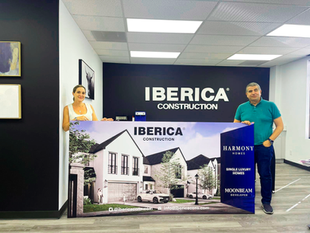
Designing for Marketability and Profit: Façades, Materials, and Layouts in Residential Construction
Aug 7
4 min read
0
51
0

Strategic architectural choices—including façade aesthetics, material selection, and interior planning—significantly influence a property’s market performance. Research shows that higher construction quality and thoughtful design translate into measurable price premiums. For example, a large study of housing transactions in Singapore found that better-built apartments sold for higher prices and experienced stronger appreciation than lower-quality units (Ooi, Le, & Lee, 2014). Similarly, façade treatments and finishes often become focal points for buyers, who are willing to pay more for well-executed design. In short, design quality—beyond location alone—can significantly boost profitability.
Façade Design and Curb Appeal
The building’s façade is its first impression, and an attractive exterior markedly enhances curb appeal and perceived value. Industry data support this: according to the 2024 Cost vs. Value Report, adding manufactured stone veneer to a home’s exterior recoups approximately 153% of its cost at resale, while replacing a basic front door with a steel model recovers about 188% (Zonda Media, 2024). This suggests that investing in high-quality cladding, siding, and entry features tends to generate positive returns. Durable materials such as brick, stone, and high-grade composites, as well as architectural accents like porches, balconies, and modern trim, not only enhance appearance but also improve performance (e.g., insulation, reduced maintenance) (Den Heijer, 2013). A visually striking and well-built façade attracts buyers and supports higher market valuation.
Materials and Finishes: Quality, Durability, and Sustainability
Interior finishes and construction materials equally influence a home’s market appeal. Premium features—such as hardwood flooring, stone countertops, and upscale fixtures—signal quality and tend to attract discerning buyers. Increasingly, modern buyers also value sustainability. A survey by the National Association of Home Builders (NAHB, 2021a) found that 66% of homebuyers prefer durable and environmentally friendly materials, and are willing to pay up to $9,300 more for a home that saves $1,000 annually in energy costs.
The economic benefits of sustainable design are well documented. For instance, LEED-certified multifamily buildings in Washington, D.C. rented for approximately 20% more and incurred 10% lower operating expenses compared to conventional buildings (Browne, 2020). High-performance materials—such as well-insulated walls, efficient HVAC systems, and solar-ready roofs—frequently result in tangible rent or sale premiums. Even traditional upgrades offer solid returns; a midrange kitchen remodel recoups around 96% of its cost (Zonda Media, 2024). For investors, this underscores that smart material choices—balancing cost, durability, and performance—can directly enhance marketability and net operating income.
Internal Layout and Living Spaces
A home’s layout must reflect contemporary buyer preferences. Open-concept floor plans currently dominate: 76% of newly built homes feature fully or partially open kitchen-to-family-room layouts (Quint, 2021). Such spaces foster social interaction and maximize natural light. At the same time, specialized rooms have gained importance. The same NAHB report noted that 63% of buyers deemed a home office essential or desirable, while 64% sought a large “great room” or family area. Over 80% prioritized laundry rooms and full bathrooms on the main floor (NAHB, 2021a).
Developers can add value by integrating these features—such as flex spaces for home offices or finished bonus rooms—into their designs. Efficient spatial planning also matters: layouts that provide logical circulation, ample daylight, and minimized wasted space (e.g., shorter corridors, optimized storage) generally command higher rental or resale prices.
Market Research Insights: Linking Design to Value
Market data confirm the financial value of design-led strategies. Ooi et al. (2014) demonstrated that construction quality leads to a measurable “quality premium”: units with superior workmanship sold for higher prices and delivered stronger capital gains. Likewise, sustainable design has proven commercial advantages. As noted, green-certified properties typically outperform conventional ones in both rent levels and operational savings (Browne, 2020).
Local data reinforce this trend. In 2022, Houston experienced an 8% year-over-year increase in home values, positioning it among the country’s fastest-growing housing markets (Iberica Construction, 2023). In this context, well-designed homes with thoughtful materials and layouts are more likely to sell or lease quickly—and at a premium—compared to less differentiated offerings. Savvy investors use market research to inform design. If surveys show demand for home offices, energy-efficient systems, or upscale kitchens, then incorporating those features is a sound financial strategy.
Conclusion: Partnering with Iberica Construction
In conclusion, façade quality, durable materials, and intelligent layouts are all proven drivers of residential value. Developments that emphasize these factors tend to achieve faster sales, higher occupancy rates, and premium pricing (Ooi et al., 2014; NAHB, 2021a).
For investors in the Houston area, optimizing these elements requires a construction partner who thinks like both an architect and a market analyst. Iberica Construction positions itself as that partner. By emphasizing evidence-based design aligned with investor goals, the company combines construction expertise with real estate insight. As stated on its website, Iberica offers residential construction services “to maximize ROI and take advantage of property appreciation” (Iberica Construction, 2023). In practice, this means collaborating with developers to integrate well-designed façades, sustainable materials, and market-driven layouts—ensuring each project reaches its full value potential.
References
Browne, N. (2020). The effect of LEED certification levels on multi-family residential buildings in the District of Columbia [Working paper]. Office of the Chief Financial Officer, District of Columbia. https://cfo.dc.gov
Den Heijer, A. (2013). Assessing façade value: How clients make business cases in changing real estate markets. Journal of Facade Design and Engineering, 1(1–2), 3–16. https://doi.org/10.7480/jfde.2013.1-2.644
Iberica Construction. (2023, March 18). Maximizing profitability and appreciation in real estate development in Houston: Opportunities with Iberica Construction [Blog post]. https://www.ibericacons.com/post/maximizing-profitability-and-appreciation-in-real-estate-development-in-houston-opportunities-with-
National Association of Home Builders. (2021a, February 11). NAHB announces top sustainable and green building trends and features in homes [Press release]. https://www.nahb.org
Ooi, J. T. L., Le, T. T. T., & Lee, N.-J. (2014). The impact of construction quality on house prices. Journal of Housing Economics, 26, 126–138. https://doi.org/10.1016/j.jhe.2014.10.001
Quint, R. (2021, March). What home buyers really want: 2021 edition [Special study]. National Association of Home Builders. https://www.nahb.org
Zonda Media, Inc. (2024). Cost vs. value 2024: National report. Journal of Light Construction. https://www.jlconline.com











